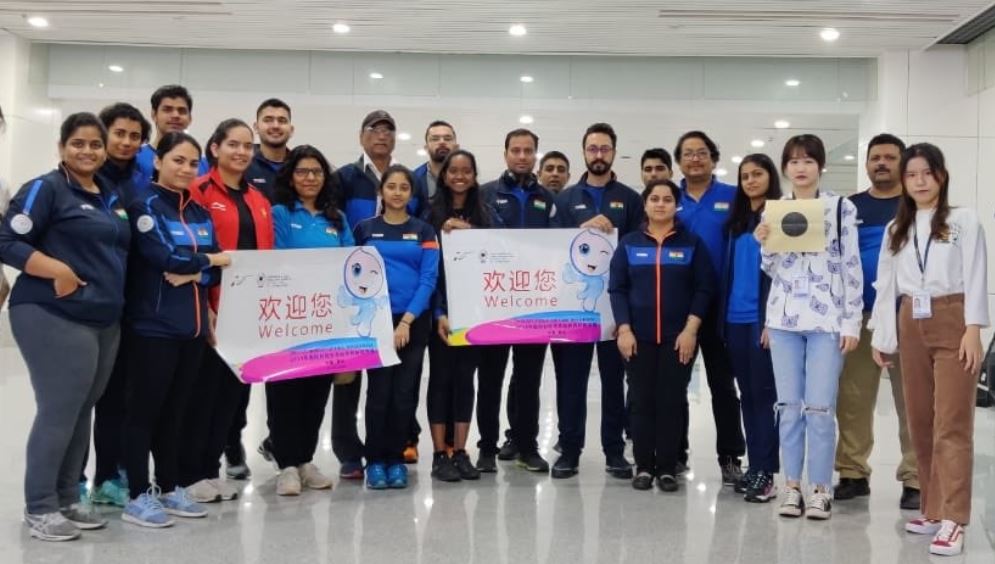
Indian shooters hit the bulls eye in 2019, raise hopes for Olympics
An extremely talented youth brigade took charge from the front and brought their overall medals tally at 21 gold, six silver, and three bronze at all the Rifle-Pistol World Cups and Finals this year.

India had a star-studded 2019 as its shooters dominated throughout the year by hitting the target with monotonous regularity while making world events look like any other domestic tournament.
An extremely talented youth brigade took charge from the front and brought their overall medals tally at 21 gold, six silver, and three bronze at all the Rifle-Pistol World Cups and Finals this year.
A total of 15 Olympic quotas could set up the shooters for a probable record haul at the 2020 Tokyo Olympics. The presence of a larger contingent would important also after facing a meltdown at Rio de Janerio. This also reflects the country’s rapid rise in the sport over the last year.
Indian shootings best show at the Olympics remains the two medals won at London in 2012, but if the shooters exploit in recent months are anything to go by, the country can easily emulate or better than in Tokyo.
However, the National Rifle Association of India (NRAI), having endured an unpleasant experience in Rio, is far from basking in its shooters glory yet.
Also read: Manu, Elavenil, Divyansh shoot gold in ISSF World Cup Finals
Impressed the association is with the performance that may have exceeded expectations but, instead of celebrating, it is looking at ways to protect them from “exploitation and distractions”.
That called for taking some very tough decisions, including banning the shooters from signing any fresh commercial deals in the run-up to the Olympic Games, a move that may not have found favours with many.
NRAI president Raninder Singh said even the shooters parents will have to sign a bond that no exploitation will be done for “financial gains”, something that has been termed infringement of personal space.
Besides the shooters, the federation has also worked extensively towards bringing the sport to where it is today, and it doesn’t want all their hard work to go waste in the Olympic year.
From drawing a blank at Rio to winning a bagful of medals almost everywhere in recent times, it will be wise to say that Indian shooting has come of age, and a lot of credit for the turnaround must go to the NRAI.
Paying heed to the corrective measures suggested in the Abhinav Bindra-led committees scathing report, which was filed after the disastrous outing in the last Olympics, the NRAI changed Indian shootings attitude, its policies, and practices, and it is paying rich dividends for a while now.
With the help of people like Jaspal Rana and Smaresh Jung, the federation has effectively managed its junior programme, leading to the emergence of talents like Manu Baker, Saurabh Chaudhary, Divyansh Singh Panwar and Elavenil Valarivan.
Thanks to the their exploits as well as some telling contributions from seniors such as Sanjeev Rajput and Tejaswini Sawant, India topped the medal charts in all the World Cups this year.
Also read: Rajeshwari Kumari shoots women’s trap national record, confirms NRAI
India dominated the 10m field consistently, with Apurvi Chandela, Anjum Moudgil and Elavenil Valarivan finishing the year as world number one, two and three respectively.
But nobody jumped as big as Rajput, who came out of obscurity to clinch the men’s 50-meter rifle 3-position silver and the Olympic quota place in the Rio World Cup.
Sanjeev moved from the 75th spot to eighth.
Also, nine medals, including five golds at the September World Cup in Rio and three in the year-end prestigious World Cup Finals in Putian, China, suggest that the sport is headed in the right direction.
As the year drew to a close, unheralded 18-year-old Zeena Khitta of Himachal Pradesh claimed the air rifle gold medal at the Nationals ahead of the established Mehuli Ghosh and Apurvi Chandela.
Likewise, Ayushi Podder won the team silver in 50m rifle 3 positions event at the Asian Shooting Championships in Doha.
Their success also displayed the depth of the talent pool in Indian shooting.
The federation is hoping that its trailblazers carry their form into Tokyo, but before that, the shooters will also have opportunities to win a few more medals and boost their morale further.
One of them is the International Shooting Sport Federation (ISSF) World Cup in New Delhi in February.
While its shooters set the range ablaze, India vehemently objected to the Commonwealth Games Federations (CGF) move to exclude the sport from the roster for 2022 Birmingham edition.
Refusing to go back on its decision despite pressure from India and the International Shooting Sport Federation (ISSF), the CGF last month made it clear that there was no plan to have a Commonwealth Championship of shooting in India during the 2022 Birmingham Games to make up for the sports axing from the multi-sport showpiece.
(With inputs from agencies)


